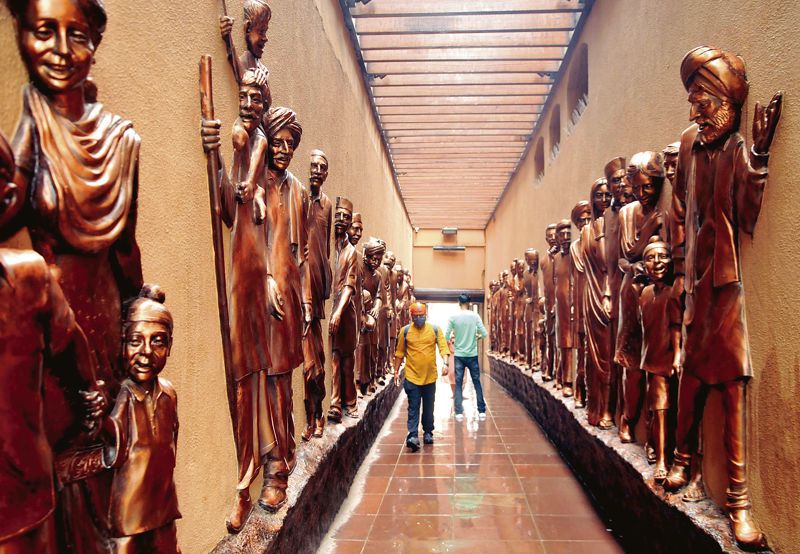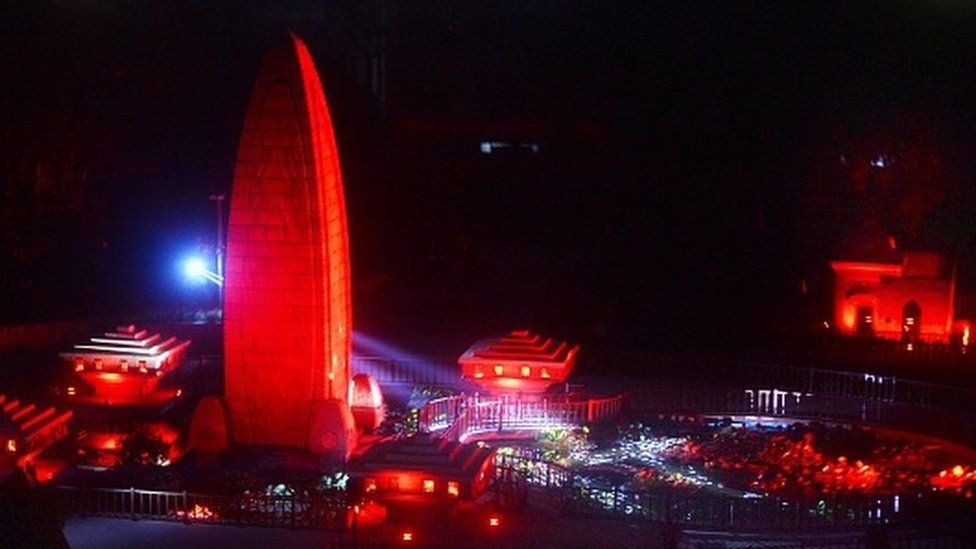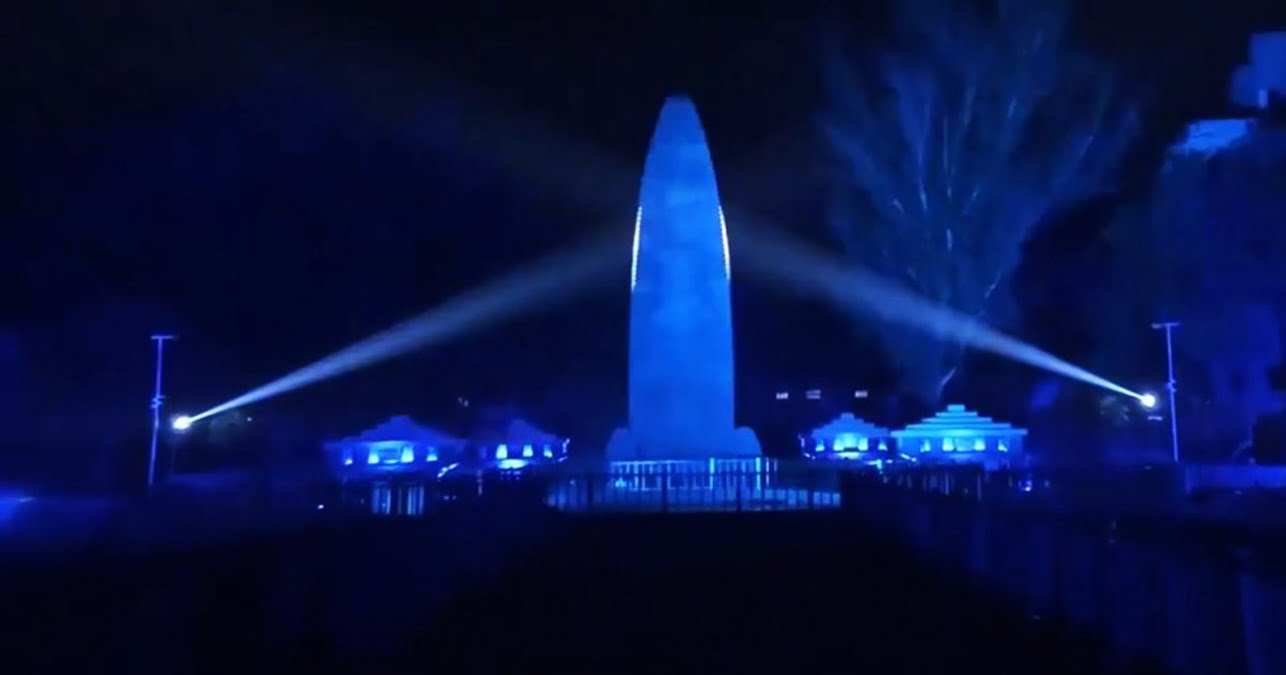On the evening of 28 August, 2021, the Prime Minister tweeted this: “Join me as we inaugurate the renovated complex of Jallianwala Bagh Smarak today at 6:25 PM. I also invite you to watch the sound and light show. It would display the horrific massacre of April 1919 and instil a spirit of gratitude and reverence towards the martyrs.” This pertained to the celebration of what the PM and the ruling party is calling the “renovation” of the Jallianwala Bagh.
Needless to say, this move, both the Jallianwala Bagh Memorial ‘renovation’ and the celebration that has followed outraged civilians, historians and members of the opposition for obvious reasons. Historian Kim A. Wagner tweeted: “Devastated to hear that Jallianwala Bagh, site of the Amritsar Massacre of 1919, has been revamped – which means that the last traces of the event have effectively been erased. This is what I wrote of the memorial in my book, describing a space that has now itself become history.”
Historian Kim A. Wagner tweeted: “Devastated to hear that Jallianwala Bagh, site of the Amritsar Massacre of 1919, has been revamped – which means that the last traces of the event have effectively been erased. This is what I wrote of the memorial in my book, describing a space that has now itself become history.”
This needless beatification and “erasure of history”, the money spent on doing so, when instead a nation state’s focus should be on keeping places of rich history intact, all leads us to question the imagined narrative that the BJP and Modi are attempting to create through the same. From Delhi University dropping the texts by Dalit writers Bama Foustina Soosairaj and Sukirtharani and that by Mahasweta Devi, a course in Jawaharlal Nehru University calling Islamic terrorism the only form of terrorism to renaming public spaces that were earlier named after prominent Muslim leaders and now the ‘renovation’ of an important historical space, could all be posited and studied in the larger context of an imagined political community and an imagined nationalist narrative that the BJP under the leadership of Modi is attempting to create.
Also read: Photoshopping Central Vista & Statue Of Unity Over The Dead & The Gross Mishandling Of A Pandemic
Jallianwala Bagh is a national historical landmark that has been seared into the memories of every Indian. It was here that hundreds of Indians had gathered on 13th April, 1919 to protest against the arrest of Punjabi Congress leaders Dr Saifuddin Kitchlu and Dr Satya Pal. These leaders were arrested by the Britishers because they, along with several others protested against the “Rowlatt Act”. This was an inhuman act that gave the British police the rights to arrest anyone without any reason or trial. Evidently, this angered Indian leaders and the general public, causing them to stage protests.
As part of the protest against the Rowlatt Act and the arrest of the Congress leaders, a large crowd had gathered at Jallianwala Bagh. General Reginald Dyer surrounded the place, trapping the people inside the Jallianwala Bagh. Without any warning, they began firing and that led to hundreds of people being killed and thousands being wounded.
This has been rightfully labelled one of the most dastardly attacks in Indian history.
“It is sad that such narratives of joint struggle and joint martyrdom of Indian people lie hidden in the dark rooms of the National Archives. If only these are made accessible to the younger generation, they might quell many of the communal, Casteist and sectarian agendas running in the country”, wrote Shamsul Islam.
This horrific event is unforgettable in Indian history. That is why it brings back mixed emotions of sadness, rage, the urge to protest, and a sense of unity against the common enemy even today among Indians. This explains why historians, members of the opposition, and the general public, anyone aware of Indian history would get disappointed with the ‘renovation’ of historic symbol of the war against the British rule.
Rahul Gandhi tweeted: “Only a person who does not know the meaning of martyrdom can inflict such an insult on the martyrs of Jallianwala Bagh.” RTI activist Saket Gokhale responded on Twitter to this move by PM Modi, saying, “Only a psychopath with zero emotions can do a “light & sound show” where a massacre happened”.
A place of such importance is not to be toyed or messed with. Our history is to be preserved as it is, as it stands for what our people went through and how intense and heart-wrenching the struggles were.
Many writers and activists opposing the “Disneyfication” of Jallianwala Bagh had rightfully pointed out, in other countries, monuments and places of historic significance are maintained as they are or are restored.
As many writers and activists opposing the “Disneyfication” of Jallianwala Bagh have rightfully pointed out, in other countries, monuments and places of historic significance are maintained as they are or are restored. “Building restoration refers to the process of correctly revealing the state of a historic building, as it looked in the past and recovering the same by various measures while respecting its heritage value”, observe Sayali Sandbhor and Rohan Botre. But in the case of Jallianwala Bagh, if you see the photographs and videos of the before and after renovation process, you could clearly see that the place no longer seems to be what it stood for. Pictures of workers covering the bullet holes on the walls and pillars with black patches as part of the now infamous ‘renovation’ made it to the scrutinising eyes of those on social media.

Why would someone want to do this, to sabotage an important symbol of their own history, many have asked. A report by The Hindu noted that this project has been developed by a Ahmedabad firm called Vama Communications which was 20 crores for this work. This is the same firm that was paid to construct Mahatma Gandhi Museum in Rajkot and the National Police Museum in Delhi. Many historians noted how in the process, the people and the government of Punjab were sidelined.

What’s worse: The renovation gives you very little to relate to the past. Murals on the walls seem to indicate that the people are smiling. This completely distorts the reality of the bloodbath that happened in Amritsar on the day of the massacre. As another Twitter user points out, the statue of Shaheed Uddam Singh does not resemble him at all. What story will this tell the Indians of tomorrow, especially when it is accompanied by a “light and sound show”? That some of our ancestors gathered here to celebrate Diwali with the Britishers?

Also read: How COVID-19 Second Wave Devastated Rural India
This is not the first time large amounts of money has been spent in constructions and renovations uncalled for either. The statue of Unity, supposed to be the world’s tallest statue is completely pointless because hundreds of crores is said to be spent in the construction. As pointless as the prime minister’s photograph on citizens’ vaccine certificates would seem. We do not know what happened to the PM Cares fund either. (My family, friends, and I had to pay for our vaccines, and vaccines are supposed to be free!) Whitewashing Indian history, religious bigotry and polarization, and profiting out of selling nationalism is what the BJP seem to be excelling at.
If the government really, really cared, then the state should aim for the social welfare of its citizens instead of “Disneyfying” monuments of historic significance. Vaccines should be made free for the public. Political prisoners should be freed. Hate crimes should stop. Journalists who raise questions should not be put behind bars.
Featured image source: Scroll.in
About the author(s)
Lakshmi Prakash is a data scientist. She sees practicing equality, humanity, and science as the only possible path to a progressive future and holds that the absence of any one of these will negate any growth in other areas. Her hobbies include reading fiction and non-fiction, learning something new, brisk-walking, cycling, and writing a chapter only to forget where she saved it.




